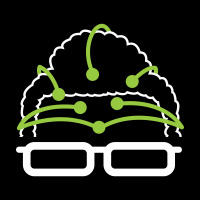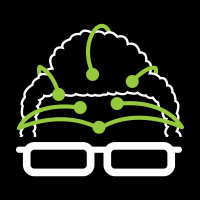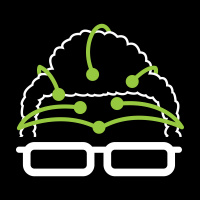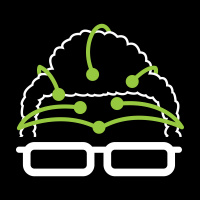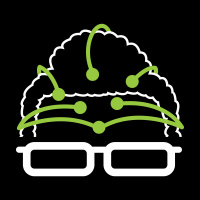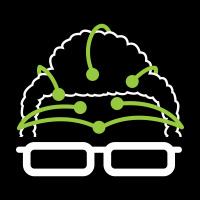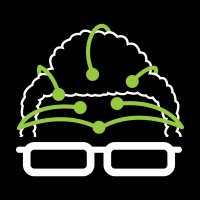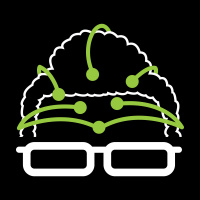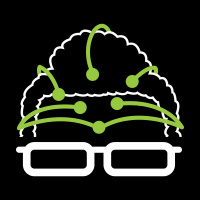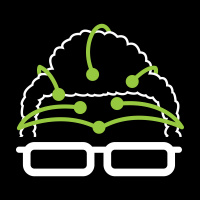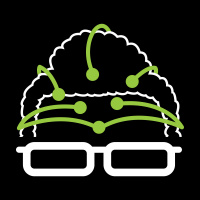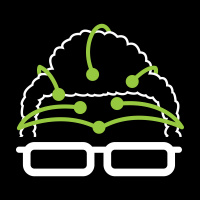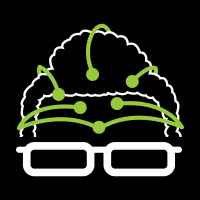Sinopsis
Dharma in the Age of the Network
Episodios
-
The Traditional 3-Year Retreat: Intensive Training for a Nonexistent Job
21/07/2015 Duración: 24minLama Sarah Harding, Tibetan translator and student of the late Kalu Rinpoche, joins us to discuss the experience of doing a traditional 3-year retreat in the Tibetan tradition. She was part of a small group of people, who in the mid 70’s did the first 3-year retreat held for Westerners. Listen in to find out more about the practices one does during the traditional retreat, what the biggest challenges can be, and what the benefits are (especially when compared with shorter periods of practice). This is part 1 of a two-part series. Listen to part 2, Western Buddhism: Megatrends & Scandals. Episode Links: Jamgon Kongtrul’s Retreat Manual ( http://bit.ly/3oIyzG )
-
The Buddha Didn't Have a Credit Card
21/07/2015 Duración: 23minInsight Meditation teacher, Diana Winston, joins us to discuss an extremely relevant topic: Buddhism & Money. We explore whether or not spirituality and money are incompatible (as they are often seen) and if not how they might go together. Diana shares with us some of the original, though not so well known, teachings that the historical Buddha gave on money. She also discusses why both Buddhist teachers and practitioners should work with money and become familiar with it, and recounts her own journey with spiritual practice and money and how she has been able to bring the two together. Episode Links: The Dighajanu Sutta ( http://www.accesstoinsight.org/tipitaka/an/an08/an08.054.than.html ) Hooked!: Buddhist Writings on Greed, Desire, and the Urge to Consume ( http://bit.ly/1IjV3V ) Wide Awake: Buddhism for the New Generation ( http://bit.ly/S7BlN )
-
Different Types of Jhana: Sutta, Vishudimagga, & Vipassana
21/07/2015 Duración: 22minWe continue our discussion with insight meditation teacher and author, Richard Shankman. In this episode we continue to dissect the different kinds of samadhi and their respective fruits–what in the Theravada tradition are called jhana (or “meditative absorption”). According to Shankman there are two ways of approaching the attainment of jhana, one as was taught in the original canonical texts of the Theravada, the Pali Suttas, and the other from the later commentaries on the Buddha’s teachings, the Vishudimagga. As a result we get two different forms of jhana–one called Sutta jhana and the other called Vishudimagga jhana. This two-fold understanding, though geeky, shines light on the different methods of practicing both samadhi and vipassana meditation and offers a unitary model for understanding the two together.We also briefly touch on a term called “vipassana jhana,” which is used by notable Burmese and American insight meditation teachers, and relate the development of insight (via vipassana) to these tw
-
The Power of Samadhi
21/07/2015 Duración: 22minRichard Shankman, a teacher in the insight meditation tradition and the author of the recently released book The Experience of Samadhi, joins us to discuss the various teachings and approaches to what in the Theravada tradition is called samadhi or concentration meditation.During this episode Richard shares some of his personal background with samadhi practice and also explains two different forms of deep samadhi, called jhana in the Theravada tradition–one from the time of the Buddha as captured by the Pali Suttas and another which arouse hundreds of years later and which is captured in the authoritative text, the Visuddhimagga. Listen in to find out about these different forms of deep concentration and absorption, which are a hallmark of the Theravada tradition of Buddhism…This is part 1 of a two-part series. Listen to part 2, Different Types of Jhana: Sutta, Vishudimagga, & Vipassana.Episode Links:richardshankman.orgThe VisuddhimaggaMahasi SayadawThe Experience of Samadhi: An In-depth Exploration of Bu
-
Vajrayana in Plain English
21/07/2015 Duración: 23minIn this episode, we continue our dialogue with Shingon teacher Hokai Sobol. We begin our conversation by dropping a difficult question on Hokai, asking him how the Vajrayana traditions (both the Japanese and Tibetan) can maintain relevance in our post-modern and rapidly changing world. He suggests that we must develop a “Vajrayana in Plain English,” one that is germane to the particularities of this time and space. And as the 1st generation of Buddhist teachers and leaders near retirement-age, now is the only time that we have to do so. Listen in to hear his take on making the Vajrayana not only more relevant, but on it becoming a pioneering force and cultural leader in today’s world. This includes the way that Buddhist teachings, practice, & even creative expressions are presented. It includes nothing less than a bold transformation of the tradition. This is part 2 of a two-part series. Listen to part 1, Japanese Shingon: The True Word School. Episode Links: Hokai.info Mindfulness in Plain English ( http
-
Japanese Shingon: The True Word School
21/07/2015 Duración: 26minIn this episode we are joined by one of our favorite Buddhist Geeks, Hokai Sobol. Hokai who is a teacher in the Shingon Buddhist tradition–a form of Vajrayana found in Japan–joins us today to speak about the Shingon school. Hokai shares with us a brief history of Shingon tradition and its main teacher Kukai, the artistic dimension of Shingon, and also begins to explain the basic teachings and practices of the lineage. Similar to the Tibetan Vajrayana approaches Shingon harnesses things like mudras (gestures), mantras (sounds), and mandalas (visualizations)–which lines up with the three-fold Body, Speech, & Mind. Speaking about mantras specifically Hokai brings us through the three distinct dimensions of mantra practices and shows us how we can understand and practice with the basic mantra of “om”-“ah”-“hum.” This is part 1 of a two-part series. Listen to part 2, Vajrayana in Plain English. Episode Links: Hokai.info
-
Embodied Zen
21/07/2015 Duración: 20min“Meditation is the royal road to the unconscious.” – Carl Jung Gerry Shishen Wick, Roshi joins us today to finish the discussion on koan training, Rinzai and Soto Zen, and on a method of training he uses to help people deal with certain psychological issues–called the Great Heart Way. He sees all of these methods as leading toward a more genuine and embodied Zen. This is part 2 of a two-part series. Listen to part 1, Koan Training and the Different Styles of Zen. Episode Links: The Great Heart Way: How To Heal Your Life and Find Self-Fulfillment ( http://bit.ly/16ZWG7 ) Great Mountain Zen Center ( http://www.gmzc.org ) The Book of Equanimity: Illuminating Classic Zen Koans ( http://bit.ly/la3Lt )
-
Koan Training and the Different Styles of Zen
21/07/2015 Duración: 26minGerry Shishen Wick, Roshi is a dual-lineage holder of both the Soto and Rinzai schools of Zen. His teacher Maezumi Roshi passed along both lineages, and so we take this unique opportunity to ask Roshi to compare these two different approaches. He talks about shikantaza (Just Sitting) and also about koan practice–sometimes referred to as logical paradoxes. He explains that the koan system includes many different kinds of koans, each with different purposes. Some are meant to reveal the oneness of reality, while others are point to the multiplicity within that oneness. He also discusses the difference between “live words” and “dead words,” and why that distinction is so important in the practice of Koan training. This is part 1 of a two-part series. Listen to part 2, Embodied Zen. Episode Links: The Three Pillars of Zen ( http://bit.ly/dTTbS ) Great Mountain Zen Center ( http://www.gmzc.org ) The Book of Equanimity: Illuminating Classic Zen Koans ( http://bit.ly/la3Lt )
-
Joseph Goldstein on The Science of Insight
21/07/2015 Duración: 20minJoseph Goldstein–one of the primary figures in the development of the Insight Meditation movement–finishes up his conversation with us by sharing his perspective on the recent cross-pollunation of the Buddhist meditation with scientific investigation. He shares some of the recent studies that he has contributed to–including an in-depth study at the Insight Meditation Society–and also discusses a few research possibilities that he has recommended to scientists. Finally he shares an interesting idea he had for creating a “virtual bardo machine.” This is part 2 of a two-part series. Listen to part 1, Joseph Goldstein on the Benefits of Long Term Practice. Episode Links: Mind and Life Institute ( http://www.mindandlife.org ) One Dharma: The Emerging Western Buddhism ( bit.ly/kELk5 ) Insight Meditation Society ( www.dharma.og )
-
Joseph Goldstein on the Benefits of Long Term Practice
21/07/2015 Duración: 22minJoseph Goldstein–one of the primary figures in the development of the Insight Meditation movement–joins us today to discuss the unique benefits of long-term practice. He touches in on the need the train the mind, and hence the need for long periods of dedicated training. He also shares some of the background and vision behind the long-term retreat facility that he helped start called the Forest Refuge–a place where people can come and do long, self-guided retreat practice. Finally, we touch in on the future of the insight meditation tradition, and really the development of Western Buddhism in general. This is part 1 of a two-part series. Listen to part 2, Joseph Goldstein on the Science of Insight. Episode Links: The Forest Refuge ( http://www.dharma.org/meditation-retreats/forest-refuge ) One Dharma: The Emerging Western Buddhism ( http://bit.ly/kELk5 ) Insight Meditation Society ( http://www.dharma.og )
-
Tibetan Buddhist Lineage in the West
21/07/2015 Duración: 25minReginald Ray, Tibetan Buddhist scholar and teacher, is back with us this week to discuss some pretty big topics. We explore the break that he made, several years ago with the Shambhala tradition, and the larger implications of becoming a Western teacher in the Tibetan Buddhist tradition. Connected with that we explore the whole issue of Westerners not being regularly empowered to be teachers, and several of the factors involved in that dynamic. We also touch on whether or not Westeners make the best practitioners, and what seems to keep them from going deep. This is part 2 of a two-part series. Listen to part 1, The Forest Dwelling Yogi. Episode Links: Dharma Ocean ( www.dharmaocean.org ) Your Breathing Body – Vol 1. ( bit.ly/1HOKNVR ) Your Breathing Body – Vol 2. ( bit.ly/1HOKR81 ) Touching Enlightenment ( bit.ly/ia0sJ )
-
The Forest Dwelling Yogi
21/07/2015 Duración: 27min“Enlightenment is found in the Body and nowhere else.” – famous Dzogchen saying We’re joined in this interview by Reginald Ray–author of numerous books on Tibetan Buddhism and teacher in the lineage of Chogyam Trungpa Rinpoche. In this episode we discuss the forest dwelling meditator, a category of practitioner outside of the normal lay / monastic dichotomy. In particular we look at the role that retreat–both group and solitary–plays for the type of practitioner that does intensive retreat but is not a full-time practitioner. We also discuss Reggie’s teaching emphasis on the shamanic aspect of Vajrayana Buddhism, particulary the role that the body plays in awakening. This is part 1 of a two-part series. Listen to part 2, Tibetan Buddhist Lineage in the West. Episode Links: Naropa University ( http://www.naropa.edu ) Buddhist Saints in India ( http://bit.ly/ixNr8 ) Civilized Shamans: Buddhism in Tibetan Societies ( http://bit.ly/mJeGn ) Dharma Ocean ( http://www.dharmaocean.org ) Your Breathing Body – Vol 1. (
-
Enlightenment for the Rest of Us
21/07/2015 Duración: 25minShinzen Young joins us again to discuss the possibility of a new way to deliver classical enlightenment to the masses. He discusses the classic delivery systems, which included monastic and lay life. He then builds on that to show a hybrid two-fold delivery system that would incorporate his artificial intelligence system with virtually led home retreats. This Home Practice Program is what is currently being offered at BasicMindfulness.org. Finally Shinzen discusses the “crowning glory” of his mission to unify Western and Eastern technologies, and that is to help nurture the emergence of a “neuro-scientific paradigm for classical enlightenment.” This paradigm could help lead to the emergence of technologies which have the potential to bring classical enlightenment to the masses and hence make large-scale social and individual change. Though Shinzen doesn’t think he’ll see these changes in his own lifetime, he does believe that he can do a lot to help train the future scientists who will. This is part 3 of a 3-
-
Shinzen Young: The Hybrid Teacher
21/07/2015 Duración: 30minShinzen Young, professional meditation instructor and geek-extraordinaire, joins us today to share his unique journey as a contemplative. From discontinuing his PhD studies to become a full-time shingon practitioner to taking up Japanese Zen and finally discovering the mindfulness practices originating from Theravada Buddhism, Shinzen has gone deep with several contemplative techniques. In addition to his training in the contemplative traditions of the East, Shinzen took time to train himself to become a relatively qualified mathematician and scientist so that he could one day be poised to bring together the best of the East (contemplative practice) with the best of the West (the scientific method). The hybrid of which, he thinks will yield a comletely unique fusion. Listen in to hear more from this incredibly gifted and incredibly geeky meditation teacher. This is part 1 of a 3-part series. Listen to part 2, Building a Dharma Successor and part 3, Enlightenment for the Rest of Us. Episode Links: Shinzen.org:
-
Building a Dharma Successor
21/07/2015 Duración: 21minShinzen Young, professional meditation instructor and geek-extraordinaire, continues his discussion with us on the unique approach he has taken to combining the best of the scientific approach with the best of the contemplative modalities of the East. The result of this combination appears to be a delivery system for enlightenment that uses an interactive and algorithmic approach to guiding a student in their practice. In short, instead of appointing a human dharma successor, he is trying to build one. Listen in to find out more about this artificial intelligence system, which he refers to as “virtual Shinzen,” and how it might revolutionize the way that dharma teaching is done! This is part 2 of a 3-part series. Listen to part 1, Shinzen Young: The Hybrid Teacher & part 3, Enlightenment for the Rest of Us. Episode Links: Shinzen.org: The Science of Meditation in Action ( http://www.shinzen.org ) Basic Mindfulness: Home Practice Program ( http://www.basicmindfulness.org )
-
Hollow Bones Zen
21/07/2015 Duración: 19minJun Po Roshi, an American Zen Master in the Rinzai Zen tradition, joins us again this week to discuss the limitations of Japanese Zen as it enters contemporary American culture. He also shares the way that his Hallow Bones Zen community has re-organized the core teachings of the Buddha in their five training elements: Sacred stewardship Philosophical re-indoctrination Emotional maturity & integrity Conscious embodiment Genuine insight These five training elements are a re-working and re-presentation of the original 8-fold path, but one that was designed specifically for our time and place. This is part 2 of a two-part series. Listen to part 1, Psychotropics and NeuroLinguistic Zen. Episode Links: Hollow Bones Zen School ( http://www.hollowbones.org )
-
The Zen Tree Fort in the Sky
21/07/2015 Duración: 25minKen Wilber coined the terms “ascending” and “descending” to describe two possible orientations to spiritual practice. The ascending path has to do with transcending the world, leaving samsara behind, and fusing with the infinite. The descending path has to do with finding spirit in the world–in the midst of everyday life. Both approaches are important, and both have been clearly highlighted in Stuart Davis’s journey as a Zen practitioner. Listen in to hear Davis’s radical flip-flop between these two approaches. Where Davis once found himself sitting up in his “Zen tree fort in the sky” he now finds that “the mystery” is most intimately connected with being a father & husband. Lastly, Davis shares with us a very strange and powerful connection he has with crows (yes, the animals), who apparently are an important symbol in the Zen tradition. This is part 2 of a two-part series. Listen to part 1, Stuart Davis: Bodhisattva Rocker. Episode Links: Stuart's Crow Paintings ( http://www.stuartdavis.com/paintings )
-
Psychotropics and NeuroLinguistic Zen
21/07/2015 Duración: 22minJun Po Roshi, an American Zen Master in the Rinzai Zen tradition, joins us to discuss his fascinating history with psychotropic drugs, including a form of LSD, called Clear Light, that he helped to create and distribute a long time ago. We also speak with him about his new form of Koan practice that uses NeuroLinguistic Programming (NLP) techniques to help anchor spiritual realization in one’s linguistic structures. This is part 1 of a two-part series. Listen to part 2, Hollow Bones Zen. Episode Links: Hollow Bones Zen School ( http://www.hollowbones.org )
-
Stuart Davis: Bodhisattva Rocker
21/07/2015 Duración: 25minThis week we’re joined by prolific musician, artist, writer, & comic Stuart Davis. Davis, a long-time Zen practitioner, shares with us his background as a creative and the resulting unique understanding that he has of the Bodhisattva’s path. Specifically, we discuss his current creative projects, including a language called IS that he is in the process of developing & and a spiritual talk-show that he’s hosting entitled Sex, God & Rock ‘n Roll. We also cover the topic of re-incarnation, and the spiritual tutelage he has received from his wife Marci. We hope you enjoy this interview with one of the most creative, absurd, and hilarious Zen-artists we know! This is part 1 of a two-part series. Listen to part 2, The Zen Tree Fort in the Sky. Episode Links: StuartDavis.com Sex, God, & Rock ‘n Roll ( http://www.sexgodrocknroll.com )
-
The Dhamma Brothers: Vipassana Meditation in Prison
21/07/2015 Duración: 26minWe are joined this week by Jenny Phillips, Director and Producer of the newly released documentary, The Dhamma Brothers. The Dhamma Brothers gives an in-depth look at how a trial program of vipassana meditation courses radically transforms the lives of inmates in a the maximum-security prison facility in Alabama. In our interview with Jenny we explore the story behind the film, her intentions for creating it, and the potential ramifications of introducing these powerful meditation practices into an environment where genuine positive transformation is almost unheard of. Put another way we discuss what happens when “East meets West, in the Deep South.” To find out more about the movie and to watch the trailor please visit: www.dhammabrothers.com. Episode Links: Interview with Jenny Phillips on Oprah’s Soul Series ( http://www.oprah.com/spirit/Jenny-Phillips-on-Oprahs-Soul-Series-Webcast ) Doing Time, Doing Vipassana ( http://www.karunafilms.com/dtdv/dtdv.htm ) The Dhamma Brothers Film ( http://dhammabrothers.co

